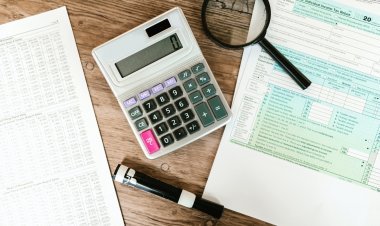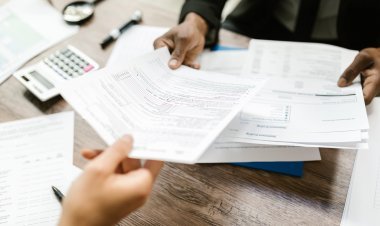A Comprehensive Guide to Documents Required for Loans
Loan Documentation Essentials: A Comprehensive Guide to the Documents You Need for a Successful Loan Application. Get Your Finances in Order and Secure Your Desired Financing

A Comprehensive Guide to Documents Required for Loans
Introduction
Obtaining a loan is a significant financial transaction that involves various steps, including providing the necessary documentation. Lenders require specific documents to assess your creditworthiness, financial stability, and ability to repay the loan. In this blog, we will explore the common types of loans and the documents typically required for loan applications.
Chapter 1: Personal Loans
Personal loans are unsecured loans that can be used for various purposes, such as debt consolidation, home improvement, or unexpected expenses. Here are the documents often required for a personal loan application:
-
Identification: A government-issued photo ID, such as a driver's license or passport.
-
Proof of Address: A utility bill, rental agreement, or a recent bank statement with your current address.
-
Income Verification: Recent pay stubs, W-2 forms, or tax returns to demonstrate your income.
-
Bank Statements: Several months of bank statements to showcase your financial history and cash flow.
Chapter 2: Mortgage Loans
Mortgage loans are used to purchase homes or refinance existing mortgages. The documentation required for a mortgage application is more extensive due to the significant loan amounts involved:
-
Identification: Photo ID for all applicants.
-
Proof of Income: Detailed income documentation, including pay stubs, W-2s, and tax returns.
-
Bank Statements: Several months of bank statements to assess your financial stability.
-
Credit Report: Lenders will obtain your credit report to assess your creditworthiness.
-
Property Documents: Information about the property, such as the purchase agreement and property appraisal.
-
Employment Verification: A letter from your employer or proof of self-employment income.
Chapter 3: Auto Loans
Auto loans are used to finance the purchase of vehicles, and the documentation needed is somewhat different from personal loans and mortgages:
-
Identification: Photo ID for all applicants.
-
Proof of Income: Recent pay stubs, tax returns, or bank statements.
-
Vehicle Information: The make, model, and VIN of the vehicle you plan to purchase.
-
Insurance Information: Proof of insurance coverage for the vehicle.
-
Proof of Address: Documentation to verify your current address.
Chapter 4: Business Loans
Business loans are designed to support small businesses and entrepreneurs in various financial endeavors. Documentation requirements may vary depending on the lender and the type of business loan. Commonly required documents include:
-
Business Plan: A detailed business plan outlining your goals, strategy, and financial projections.
-
Financial Statements: Recent balance sheets, income statements, and cash flow statements.
-
Personal and Business Tax Returns: Tax returns for both your personal and business finances.
-
Bank Statements: Several months of business bank statements to assess cash flow.
-
Legal Documents: Business licenses, contracts, and other legal documents.
Chapter 5: Student Loans
Student loans are typically used to finance education expenses. The documentation requirements for student loans often include:
-
Identification: Photo ID, such as a driver's license.
-
Social Security Number: Required for federal student loans in the United States.
-
Financial Aid Documents: FAFSA (Free Application for Federal Student Aid) and any documents related to scholarships or grants.
-
Enrollment Verification: Proof of enrollment in an accredited educational institution.
\


























